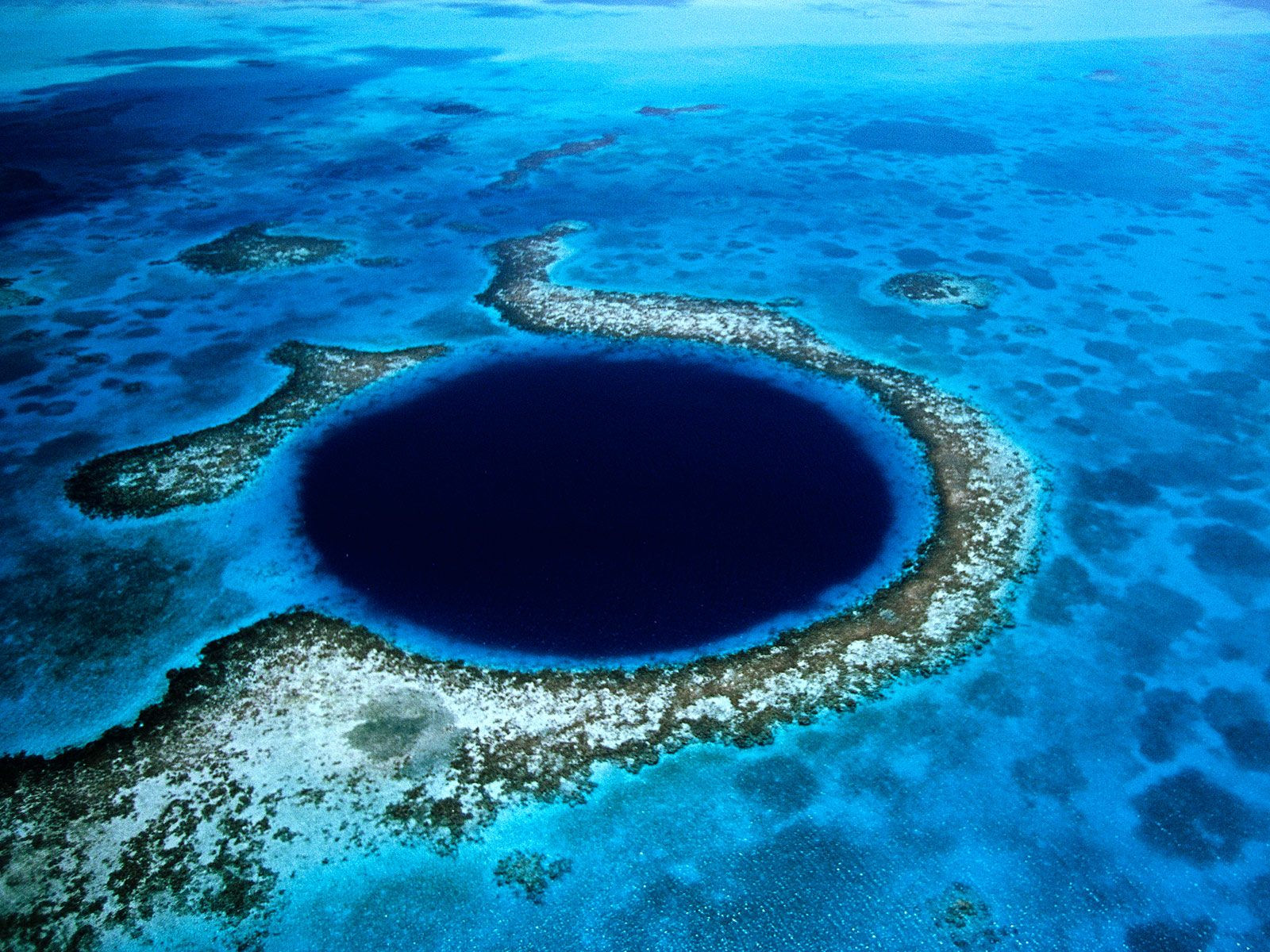Belize’s Blue Hole Offers Clues To Mayan Collapse
Sediment cores from around the Yucatán Peninsula support a theory as to what could have led to the Mayans’ demise.

This is the Great Blue Hole—a giant sinkhole located 40 miles off the coast of Belize in the Lighthouse Reef. It formed more than 150,000 years ago and is now a UNESCO World Heritage site. A popular diving destination, the Blue Hole also attracts scientists hoping to find answers buried in its mud. Belize's "blue hole." Photo by Eric Pheterson/flickr/CC BY 2.0
 This story has been resurfaced as part of Oceans Month, where we explore the science throughout the world’s oceans and meet the people who study them. Want to dive in with us? Find all of our stories here.
This story has been resurfaced as part of Oceans Month, where we explore the science throughout the world’s oceans and meet the people who study them. Want to dive in with us? Find all of our stories here.
Belize’s “blue hole,” an exquisite sinkhole famous for its pristine diving, offers clues into the decline of ancient Mayan cities that has fascinated archeologists for so long.
André Droxler, a marine geoologist at Rice University in Texas, has done several years’ research in and around the blue hole, a collapsed underwater cave near the Yucatán Peninsula (which includes part of Belize) where Mayans reigned for centuries. Last year, he and colleagues from Louisiana State University reported that sediment records from inside the watery hollow indicate periods of drought during the ninth and 11th centuries that coincide with the dwindling of Mayan cities.
“The blue hole is like a sediment trap, where there’s very little variation,” Droxler says. Its bowl-like shape shields it almost completely from the elements. As a result, sediment that has built up inside remains largely undisturbed in defined layers that create a time scale of sorts.
[Understand the pressure of deep ocean exploration with an experiment in physics.]
When the researchers took cores from the bottom of the hole, they found multiple, thin layers of fine sediment—carbonate deposited by plankton and coral reefs that ring the lagoon—interspersed with thicker bands of coarser shell fragments, which powerful, sea-churning tropical cyclones had washed into the cave, according to Droxler. By dating the layers in each core, they could pinpoint when the grittier deposits—and thus the cyclones—occurred. They found that between 800-900 A.D. and 1000-1100 A.D., there were fewer of these storms than usual.
Droxler and his colleagues corroborated those data with separate findings—which he recently presented at the American Geogphysical Union’s fall conference—from sediment cores taken from the Belize Central Shelf Lagoon, which lies very close to the Yucatán coast and receives runoff from the Maya Mountains. The sediment contains titanium, an element that’s released when rainfall weathers rock; the less titanium present, the less rainfall there probably was. Droxler’s team found that sections with lower titanium deposits corresponded with the periods of lower tropical cyclone activity identified in the blue hole cores. “The two records strengthen one another,” he says.
Together, the sediment cores support a theory that unusual periods of drought—symptomatic of larger climate changes in the region—could have suddenly reduced Mayan harvests, possibly triggering famine or even conflict, and ultimately undercutting the Mayans’ territorial prowess. The findings help demystify how powerful cities like Chichen Itza, abandoned in 1040 A.D., might have have fallen. “It’s much harder to adapt if the climate is changing from one extreme to the next,” Droxler says.
Emma Bryce is a freelance science writer whose articles have appeared in publications such as The Guardian and Audubon.